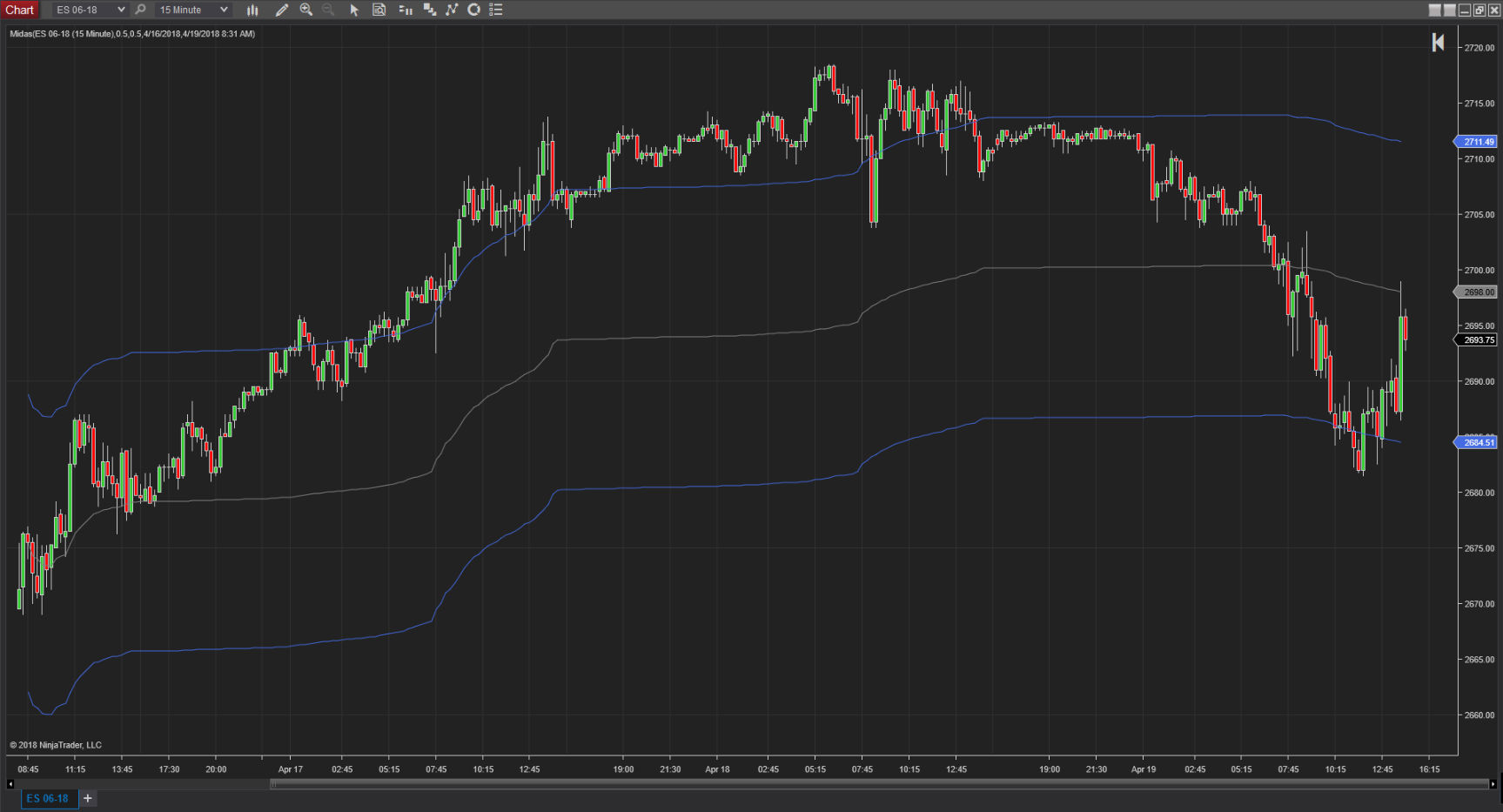The Market Interpretation/Data Analysis System (MIDAS) Midas Indicator is a technical analysis tool used to identify potential support and resistance levels in financial markets. It was developed by Paul Levine in the 1990s and is based on the market philosophy of using price and volume as primary drivers of price action. Here more details Wikipedia
(In finance, MIDAS Midas indicator (an acronym for Market Interpretation/Data Analysis System) is an approach to technical analysis initiated in 1995 by the physicist and technical analyst Paul Levine, PhD, and subsequently developed by Andrew Coles, PhD, and David Hawkins in a series of articles and the book MIDAS Technical Analysis: A VWAP Approach to Trading and Investing in Today’s Markets. Latterly, several important contributions to the project, including new MIDAS curves and indicators, have been made by Bob English, many of them published in the book.) (Wikipedia)
Midas Indicator
Send download link to:
The Midas indicator uses two lines to analyze price levels – the support line and the resistance line. The support line is the average of the highs minus the cumulative average of the lows for a given period. The resistance line is the average of the lows plus the cumulative average of the highs for the same period. The MIDAS indicator also includes a midpoint line, which is calculated as the average of the support and resistance lines.
Traders can use the Midas Indicator to identify potential entry and exit points in the market. When prices are trading above the MIDAS support line, it is considered a bullish signal and traders may look for long positions. Conversely, when prices are trading below the MIDAS resistance line, it is considered a bearish signal and traders may look for short positions.
The MIDAS indicator has gained popularity in recent years, especially among futures and forex traders, due to its ability to identify potential turning points in the market. However, as with any technical indicator, it is important to use the MIDAS indicator in conjunction with other technical and fundamental analysis tools to make informed trading decisions.

Midas Indicator


